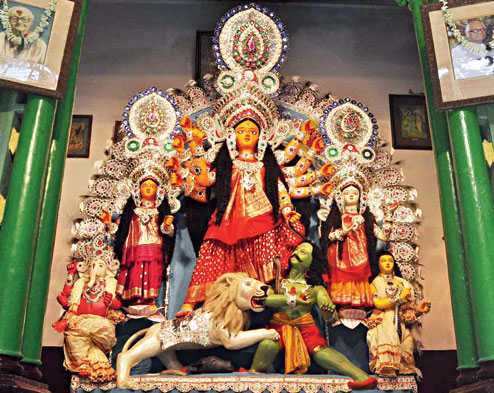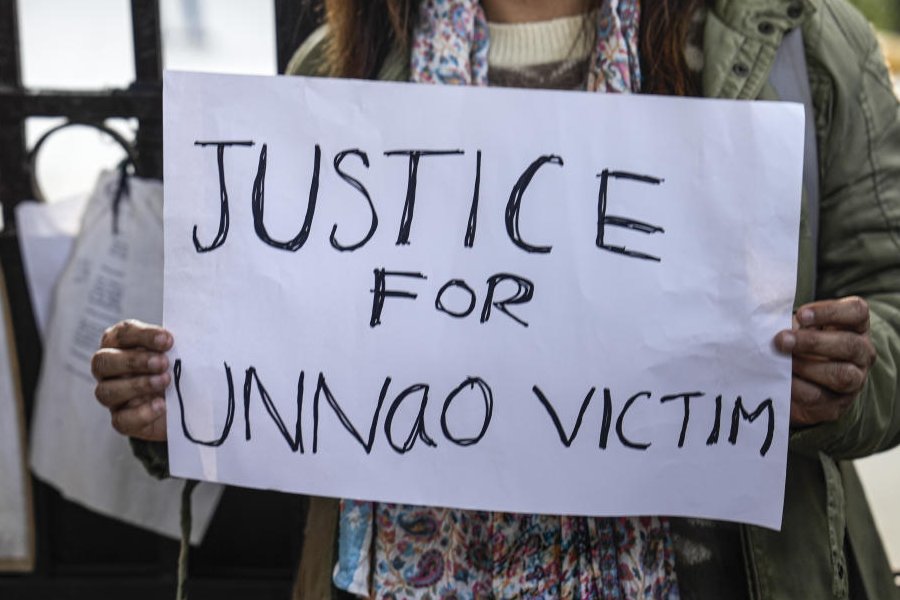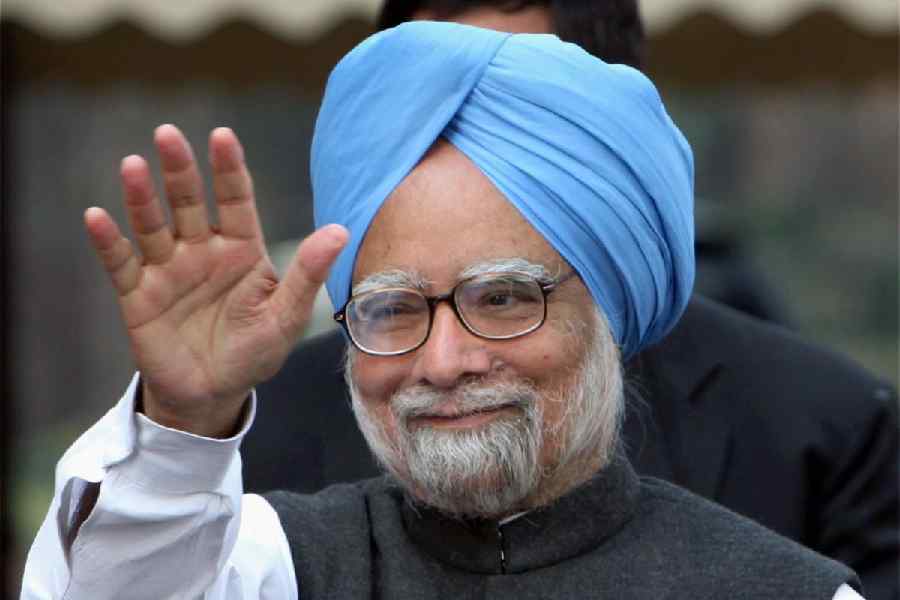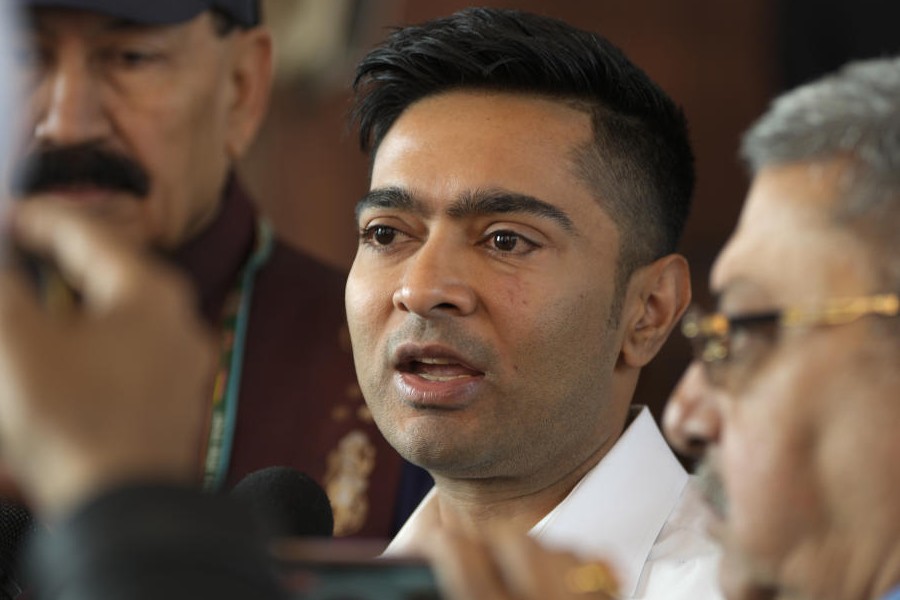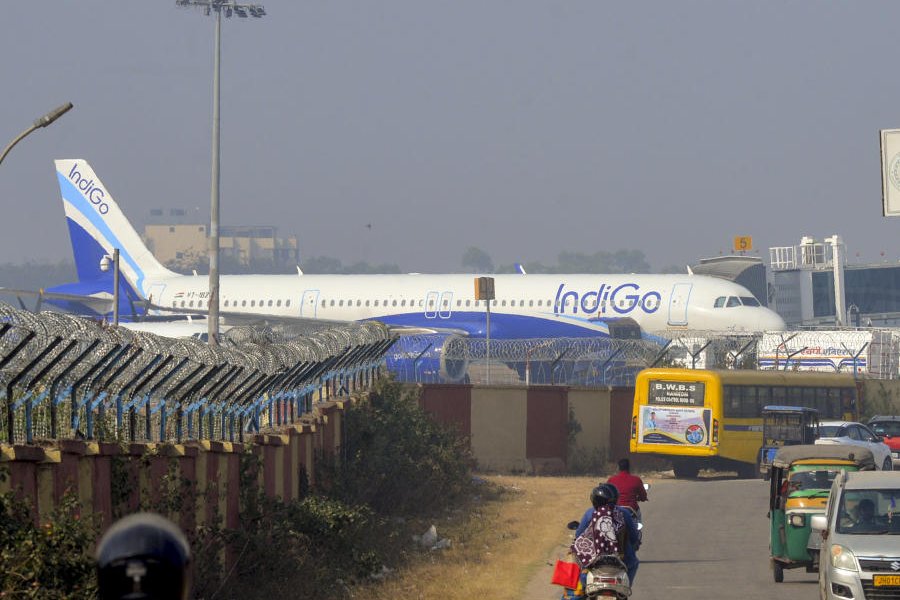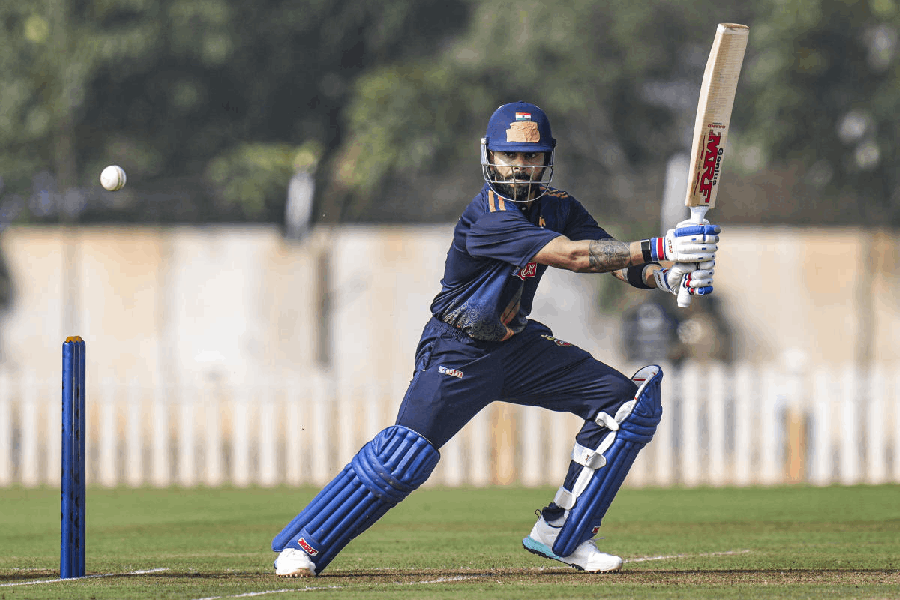Ramkrishnapur Lane is like any other meandering, narrow lane of south Howrah that barely allows two vehicles to pass simultaneously. Old, dilapidated houses line the road cheek by jowl.
Breaking the grey monotony is the bright red, palatial building named Nrisinghaniloy, which is the residence of the Boses of Ramkrishnapur.

The Boses host one of the oldest Durga Pujas on the west bank of the Hooghly, which started in 1840. It is said that the Late Ishwar Chandra Bose travelled from Singti Shibpur village in Amta to Calcutta in search of a livelihood.
He found a job at the Calcutta jetty, the dock area, before the Sepoy Mutiny. He won a stevedore contract and slowly laid the foundation of EC Bose and Company. Once he established himself, and built Nrisinghaniloy in Howrah, he called for his family. Historian Nemai Sadhan Bose belonged to this family.
The Boses used to organise a Durga Puja at their Amta house, albeit on a smaller scale. At their Ramkrishnapur residence a thakurdalan was built for the purpose and Durga Puja started here in 1840. “We have been organising Durga Puja since then without a break following the family tradition,” said Gautam Sadhan Bose, a fifth generation member of the family. According to tradition, on the day of Nanda Utsab, a day after Janmashtami, a family member collects Ganga mati and puts the first layer of clay on the bamboo skeleton of Durga.
“The idol is built at the thakurdalan by an artisan family from Midnapore, who have been doing it for three generations,” said Bose.
Durga wears the daker saaj and her weapons are of silver. Her bahan, the lion, is of a silver colour too. “We don’t know why it is so, but it has been like that since the beginning. When I was a boy I asked about it and was told that since the lion lives with Durga in the snow-clad Kailash, it is white,” said Gautam Sadhan.
Puja to the goddess has started since Pratipad, the day after Mahalaya. “The Bodhon will happen on Sashthi,” said Bose. There used to be animal sacrifice on Sandhi Puja. The khadga or chopper for sacrifice still hangs from the ante room at thakurdalan. “Animal sacrifice stopped around 1942. We offer fruits and sugar to the deity instead,” said the family member. Women in the household take charge of all the preparations.
“We offer luchi and bhaja for bhog prepared by a Brahmin,” he added. On the day of Biswarjan, the deity is carried on shoulder to the nearest ghat for immersion.
“Locals participate in our puja in a big way. Our puja has always been open to all. The grandeur has been curtailed a bit with the passage of time, but not much. It is one of the oldest pujas in Howrah. The next generation will find it tough to carry on, but carry on they will,” said Gautam Sadhan with conviction.

